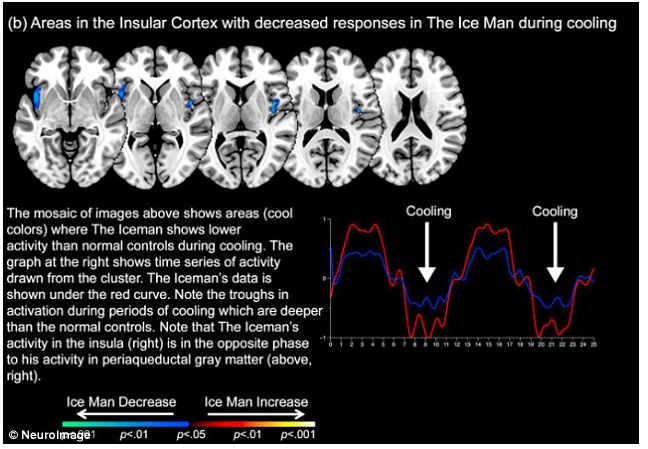Dutch adventurer Wim Hof is known as “The Iceman” for good reason. Hof established several world records for prolonged resistance to cold exposure, an ability he attributes to a self-developed set of techniques of breathing and meditation — known as the Wim Hof Method — that have been covered by the BBC, CNN, National Geographic and other global media outlets. Yet, how his brain responds during cold exposure and what brain mechanisms may endow him with this resistance have not been studied — until now.
Wayne State University School of Medicine professors Otto Muzik, Ph.D., and Vaibhav Diwadkar, Ph.D., changed that. Their publication, “Brain Over Body: A study on the willful regulation of autonomic function during cold exposure,” published in the journal NeuroImage, is the first to study how The Iceman’s brain responds during experimentally controlled whole-body cold exposure. These investigations are part of the scientists’ series of seminal studies launched in 2014 on how the human brain responds to thermoregulatory challenges. The results document compelling brain processes in The Iceman and present intriguing possibilities for how his techniques might exert positive effects related to disorders of the immune system and even psychiatry.
Over three days, Muzik and Diwadkar studied Hof’s brain and body functions using two distinct imaging techniques — including functional magnetic resonance imaging (fMRI) to study his brain and positron emission tomography (PET) to study his body. During the studies, Hof wore a specifically designed whole-body suit the researchers could infuse with temperature-controlled water while the imaging data were acquired in order to relate changes in his biology to cold exposure.


